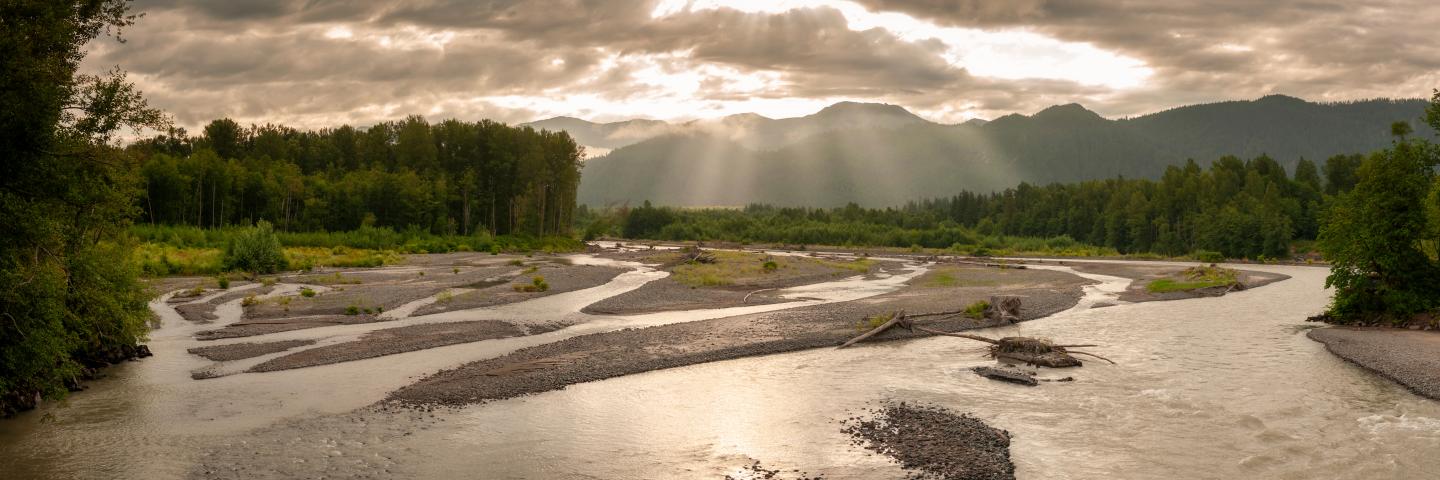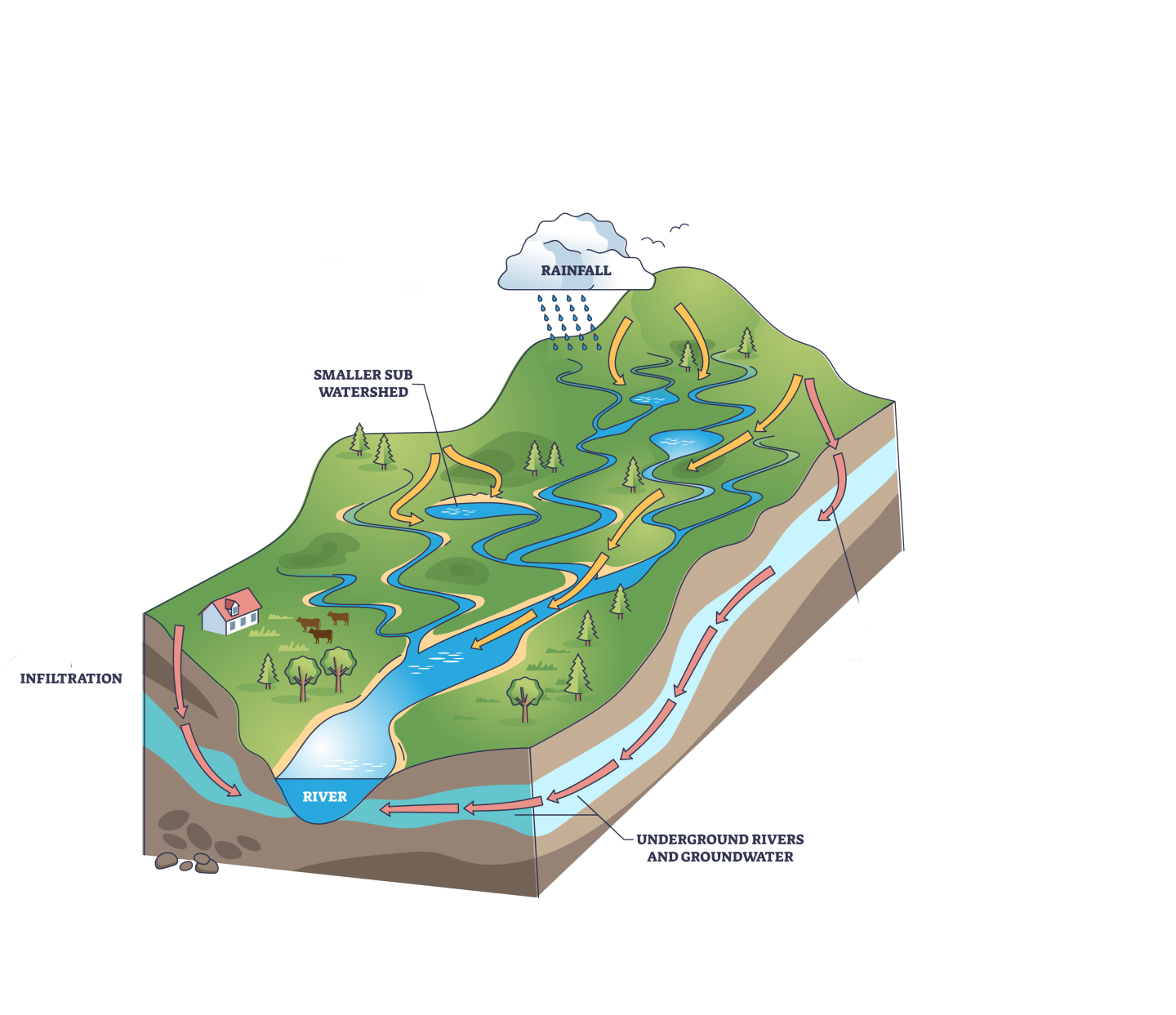NRCS State Watershed Program Managers
Contact your local NRCS Watershed Program manager for assistance:

Watersheds impact everyone; every community, farm, ranch, and forest. They provide a vital resource for all living things to survive and thrive. All watersheds are interconnected, creating a land-water system that conveys water to its final destination such as a river, lake, wetland, or estuary.
Use of good land management practices contribute to watershed health. Implementing NRCS conservation methods on working lands and employing preservation techniques in watersheds help prevent erosion, restore infrastructure, improve water and air quality, increase water filtration, enhance wildlife habitat, and provide other natural resource benefits. Working together, NRCS, land managers, ag producers, and communities help to build resilience to drought, floods, while improving water supply.

Rain and snow fall into watersheds that are ecosystems themselves. A healthy watershed naturally filters and stores water, prevents flooding and impedes wildfires, and conserves habitat.
NRCS has assisted communities with conservation in watersheds since the 1930s when the agency was born amid the Dust Bowl. NRCS provides technical and financial assistance to help farmers, ranchers, and forest landowners address natural resource concerns. NRCS also helps communities to build-in infrastructure practices that prevent future flooding, save lives and protect property. These efforts from the headwaters of the Mississippi to the Gulf of Mexico, and from the Atlantic to the Pacific, address each area's unique concerns and demands. Conservation practices include:
Shed light on your local watershed. Use the interactive map below to find your local water source and discover where your water comes from and follow the path it takes from the source to the reservoir. When it rains, where does the water go, where does it flow? Every region has a local watershed conservation district/organization. Connect with your local soil and watershed conservation district and NRCS to learn more.
NRCS Watershed Programs provides technical and financial assistance to local government agencies, tribal organizations and other eligible sponsors, to help communities implement conservation practices that address watershed resource concerns. Each program, has a specific area-of-focus as defined below:
Contact your local service center to start your application.
Do you farm or ranch and want to make improvements to the land that you own or lease?
Natural Resources Conservation Service offers technical and financial assistance to help farmers, ranchers and forest landowners.

To get started with NRCS, we recommend you stop by your local NRCS field office. We’ll discuss your vision for your land.
NRCS provides landowners with free technical assistance, or advice, for their land. Common technical assistance includes: resource assessment, practice design and resource monitoring. Your conservation planner will help you determine if financial assistance is right for you.
We’ll walk you through the application process. To get started on applying for financial assistance, we’ll work with you:
Once complete, we’ll work with you on the application, or CPA 1200.
Applications for most programs are accepted on a continuous basis, but they’re considered for funding in different ranking periods. Be sure to ask your local NRCS district conservationist about the deadline for the ranking period to ensure you turn in your application in time.
As part of the application process, we’ll check to see if you are eligible. To do this, you’ll need to bring:
If you don’t have a farm number, you can get one from USDA’s Farm Service Agency. Typically, the local FSA office is located in the same building as the local NRCS office. You only need a farm number if you’re interested in financial assistance.
NRCS will take a look at the applications and rank them according to local resource concerns, the amount of conservation benefits the work will provide and the needs of applicants. View Application Ranking Dates by State.
If you’re selected, you can choose whether to sign the contract for the work to be done.
Once you sign the contract, you’ll be provided standards and specifications for completing the practice or practices, and then you will have a specified amount of time to implement. Once the work is implemented and inspected, you’ll be paid the rate of compensation for the work if it meets NRCS standards and specifications.